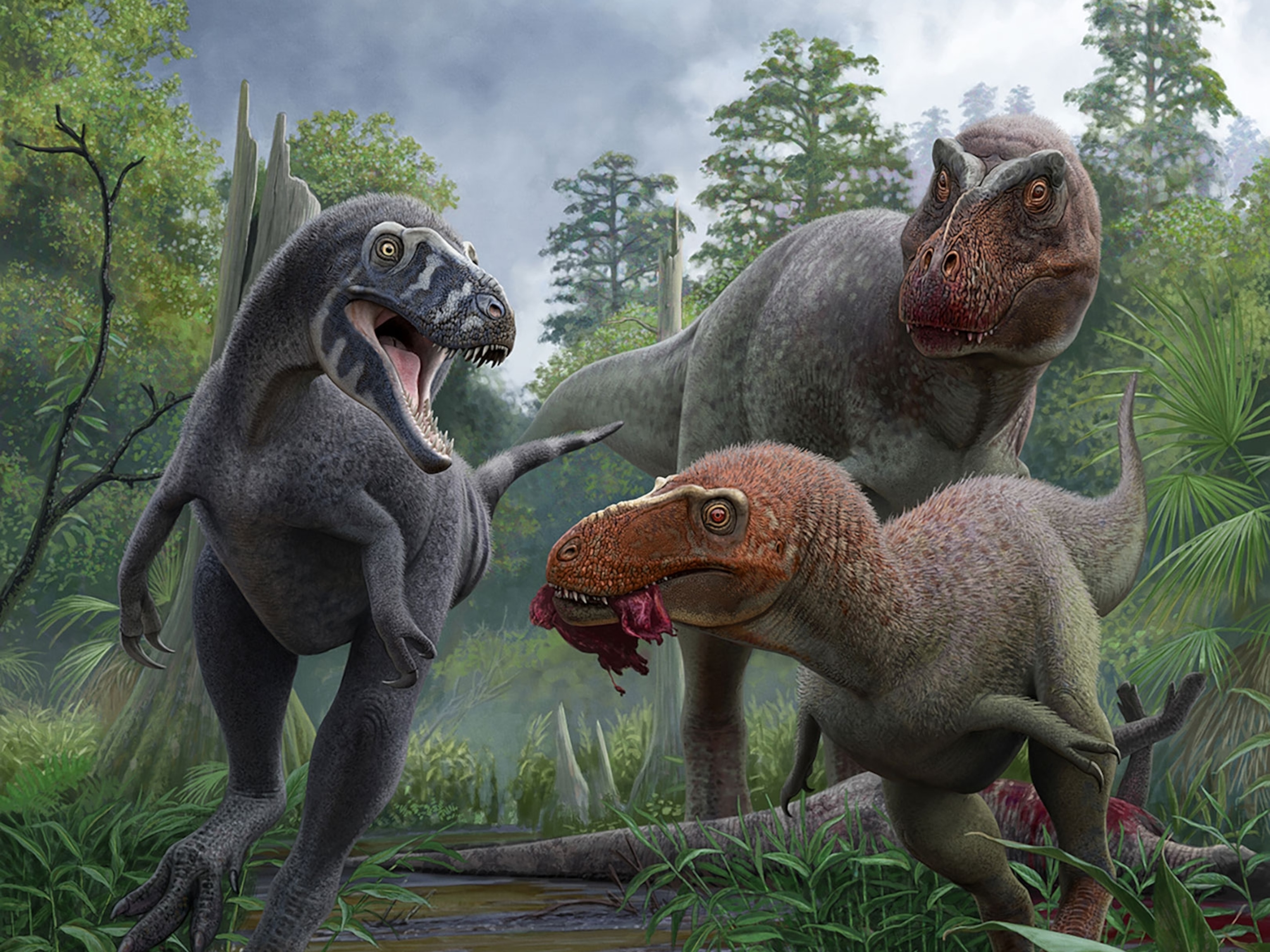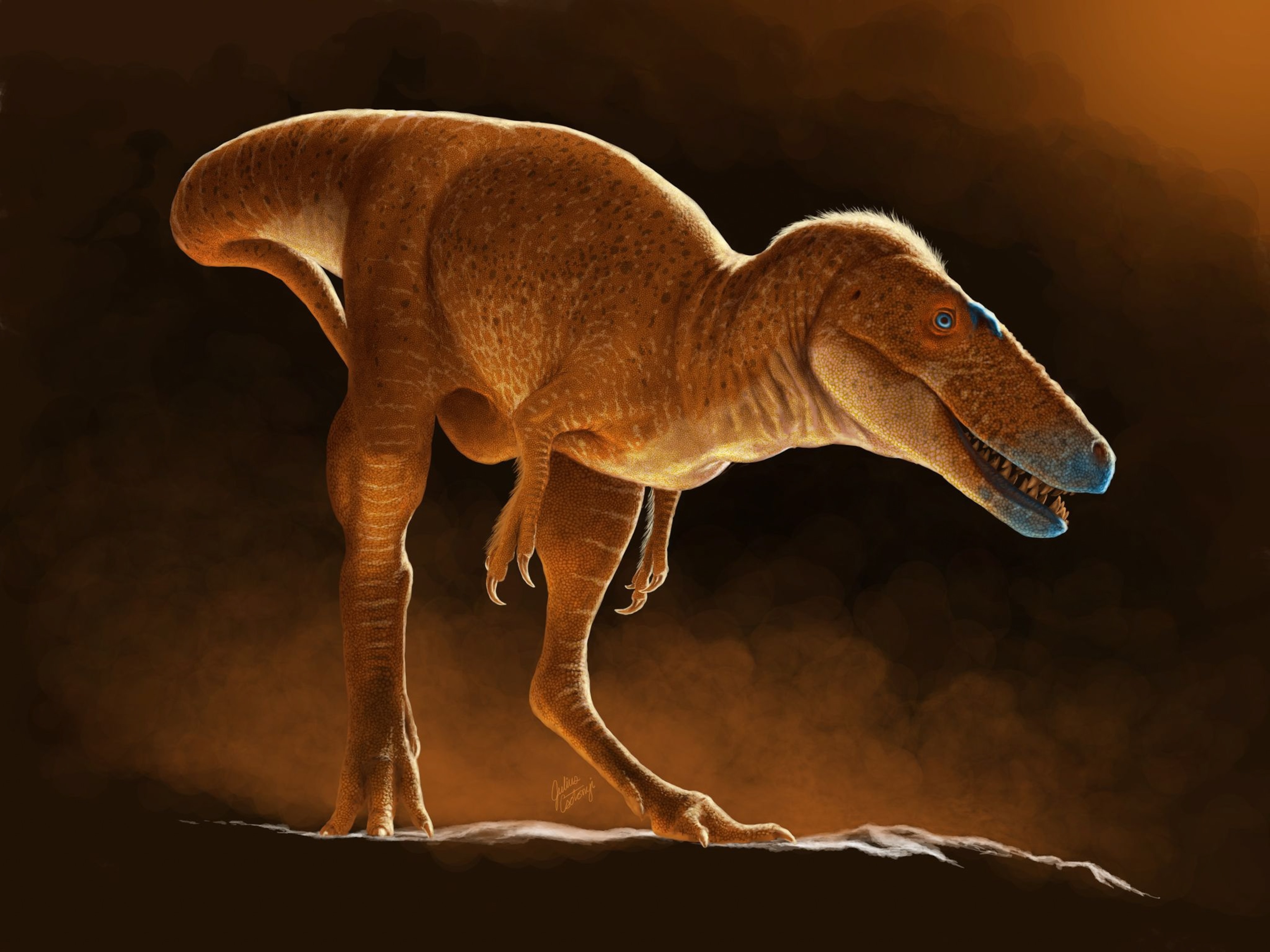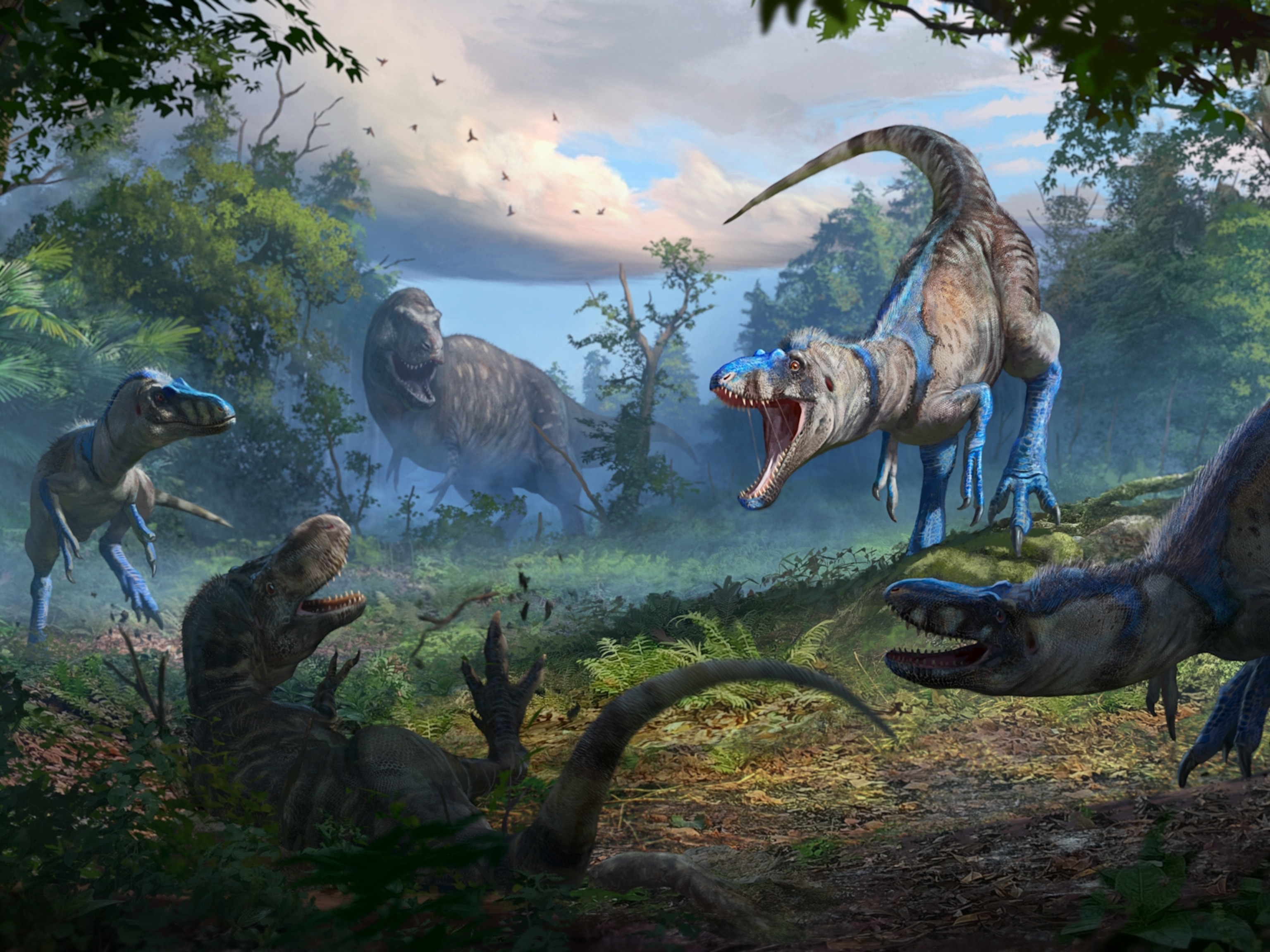
Tiny T. Rex Ancestors Achieved World Domination
"Southern Tyrant" dinosaur fossil proves early tyrannosaurs lived worldwide.
Tiny T. rex relatives once dominated the globe, a new tyrannosaur fossil reveals.
The pint-size predator, found in what is now Victoria, Australia, is the first Tyrannosaurus rex ancestor unearthed in the Southern Hemisphere. Nicknamed the Southern Tyrant, the dinosaur lived during the early Cretaceous period, about 110 million years ago.
Stretching just ten feet (three meters) and weighing only 175 pounds (80 kilograms), the animal, like T. rex, boasted a large head, short arms, and crushing jaws.
(Related: "Tiny 'T. Rex' Found—150-Pound Species Came First.")
Such mini-tyrannosaurs likely evolved into the meat-eating giants, including T. rex, that became the ultimate predators of the late Cretaceous, ruling the Earth until they vanished some 70 million years ago.
Until now, tyrannosaur fossils, big and small, have been found only in the Northern Hemisphere. (Related: "T. rex's Oldest Ancestor Discovered in China.")
But the discovery of a small early tyrannosaur in a remote southern location suggests T. rex ancestors were more widespread, said study co-author Roger Benson, a paleontologist at the University of Cambridge in the U.K.
That's because Earth's landmasses were in the process of breaking apart from a single supercontinent during the dinosaur era.
The Southern Tyrant's lineage "was probably left over from before the breakup, when we can now postulate that the tyrannosaurs were everywhere," Benson said.
'T. Rex' Evolution Faded Down South
The Southern Tyrant fossil, found during excavations funded by the National Geographic Society, raises questions about just where T. rex and its colossal cousins later evolved, Benson said. (The National Geographic Society owns National Geographic News.)
It's possible that even after the continental breakup had begun, bigger tyrannosaurs that evolved in the south could have spread out across the rather limited geographic barriers that existed.
(Related: "New 'Destroyer' Dinosaur Found, Was T. Rex Relative.")
But no matter how early tyrannosaurs traveled, it's a mystery why their one-time global domination appears to have fizzled in the south.
"Why is it that tyrannosaurs [eventually] achieved colossal size and became the apex predators in the Northern Hemisphere continents, while in the Southern Hemisphere ... the tyrannosaurs seem to just fade into obscurity?" Benson said.
The tiny tyrannosaur fossil is described in this week's issue of the journal Science.





